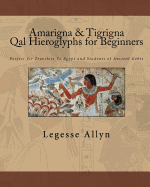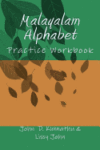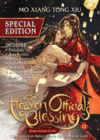Description
Perfect for travelers to Egypt and students of Ancient Gebts–Cover.;English and Egyptian with hieroglyphics.
Publisher Marketing:
Gebts is the ancient name of Egypt. Now you can properly read the hieroglyphs properly for yourself in the Amarigna and Tigrigna languages. These two languages are of the Amara and Akele-Gezai merchants, from today’s regions of Ethiopia and Eritrea, who founded ancient Gebts 5100 years ago. After 20 years of research, this book corrects Egyptologists’ hieroglyphic pronunciation and spellings mistakes. These corrections have allowed the hieroglyphic language to finally be matched to these two languages. The Tigrigna-speaking ancient Akele merchants traveled to Gebts via the Red Sea, entering Gebts in the north. The Amarigna-speaking ancient Amara merchants, entered Gebts from the southern end of Gebts. When Gebts was divided into the “Two Lands,” 5100 years ago, the northern Nile Delta was divided for the Akele to administer and the southern Nile Valley for the Amara merchants. This division is told of in the famous “Shabaka Stone” inscription. Over the following years, the Akele and Amara would mostly jointly rule ancient Gebts. This was until the so-called “New Kingdom” period of King Tut’s Akele family line, which exclusively ruled Gebts from about 1500 BC to 1069 BC (Akele kings have a falcon in their names). Shortly following, around 900 BC, hieroglyphs suddenly appear in Akele-Guzay, Eritrea (the “Akele-Guzay script,” which has been improperly labeled “South Arabian script” – not having been found in South Arabia for another 100 years after). The ancient Akele merchants having co-developed hieroglyphs with the Amara merchants, it is not surprising to see hieroglyphs in Akele-Guzay shortly at the end of the exclusive Akele rule – possibly a sign that many Akele returned home after thousands of years. Travelers to Egypt and students will especially benefit from this book. Background: Modern Egyptologists, unlike their ancient Greek historian counterparts, did not know how to read hieroglyphs until after they discovered the so-called “Rosetta Stone” in 1799, which helped them learn to decipher the hieroglyphs. But Greek historians did know the history of ancient Gebts, including that of the hieroglyphs origin and their connection to the people of today’s Ethiopia and Eritrea. Ancient Greek historians, such as Diodorus Siculus of 100 BC, knew without prejudice that the ancient Ethiopians founded ancient Gebts and that hieroglyphic writing was of Ethiopian origin. As Diodorus writes, “They say also that the Egyptians are colonists sent out by the Ethiopians… and the forms of their letters are Ethiopian.” But modern day Egyptologists, beginning in 1799 with the discovery of the 197 BC Rosetta Stone, mistakenly assigned so many wrong sounds to various hieroglyphic letters, though mostly subtle, that they rendered the hieroglyphic language unable to be matched to any Ethiopian or other language, calling it a “dead” language. This was partly due to the ancient Greek military rulers of ancient Gebts who, in 197 BC, had the propaganda message of the Rosetta Stone inscribed by their own priests. The Greeks, foreigners to Gebts, as well as to the Amarigna and Tigrigna languages, could not properly pronounce ancient Gebts words properly. And since proper spelling completely relied on proper pronunciation prior to spelling, the Greek military unknowingly transferred their pronunciation mistakes to the hieroglyphic portion of their propaganda message. Nearly two thousand years later, when modern day Egyptologists found the stone tablet and began translating the hieroglyphic message on the stone, they were already handicapped by the earlier Greek military spelling mistakes. Therefore, this book is an important part of the evolution in accurate hieroglyphic translation. More importantly, reading the hieroglyphs in Amarigna and Tigrigna provides the student, researcher, or traveler a fuller understanding, and in proper cultural context, of what the hieroglyphs can reveal about ancient Gebts, its people, and its culture






Reviews
There are no reviews yet.